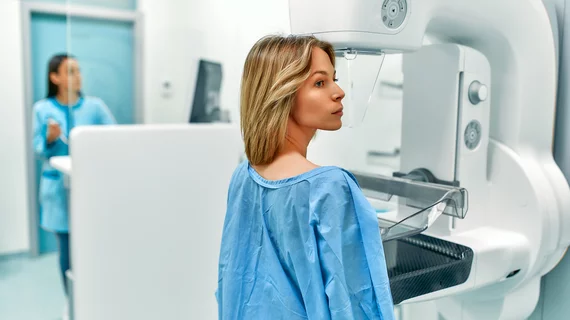Over half of eligible women skip their mammogram
Concerning new data from a MedStar national health survey reveal that more than half of women 40 and over who are eligible for breast cancer screening do not adhere to screening guidelines.
In April, the United States Preventive Services Task Force (USPSTF) released updated breast cancer screening guidelines, suggesting that all women at average risk of cancer undergo screening mammograms every other year starting at age 40. However, the new survey results indicate that up to 60% of eligible women in this age group are not following recommendations and 21% have never had a mammogram at all.
"Deaths from breast cancer are decreasing because we are catching some breast cancers early enough that women can be successfully treated and even cured,” “Lucy De La Cruz, MD, chief of the Breast Surgery Program at MedStar Georgetown University Hospital, said of the findings. “I am disheartened that so many women still report skipping this lifesaving screening."
According to the data, the guideline nonadherence is not for lack of concern about the disease—75% of the women surveyed reported being concerned about their breast health.
So, why the low screening rates among this group?
An incomplete understanding of breast cancer risk factors could be to blame. Just 5% of respondents could correctly identify all risk factors, while 26% were aware of all the symptoms.
Many reported not following guidelines because they either had a normal mammogram previously or did not have a family history of breast cancer. Complaints of pain and discomfort during mammograms and concerns about costs also were cited, despite breast cancer screening coverage being mandated by the Affordable Care Act.
This news follows recent research linking late-stage cancer diagnosis with inconsistent screening participation. Published in the Journal of Clinical Oncology, the study found that, compared to annual screening, the likelihood of late-stage diagnosis nearly doubles in women who complete screening either biennially or intermittently.
“Annual mammograms are crucial for early detection of breast cancer, which increases the likelihood of survival, decreases harms to patients because treatment may not need to be as intense, makes recovery easier and can lower the cost of care,” lead author of that study Margarita Zuley, MD, professor and chief of the Division of Breast Imaging in the Department of Radiology at Pitt and UPMC, said at the time of its release.

